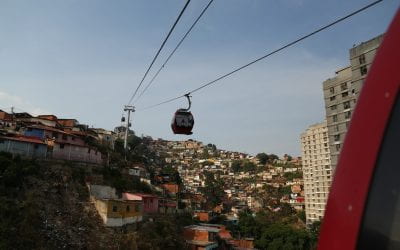Editor’s Letter
Chocolate, Parrots and Melting Snowmen
My colleague burst into my office, declaring, “Do you know climate change is going to wipe out chocolate?” Somewhere between joking and broken-hearted, she added, “We better stock up.”
A few minutes later, being the excellent researcher she is, my colleague—who asked to be called “Anastasia” because she didn’t want to reveal her chocolate addiction in public— sent me an e-mail with many sources. One of the headlines read, “Chocolate to Go Extinct in Forty Years” (Business Insider, Dec. 31, 2017). The article warned that cacao plants might die out because of rising temperatures and lessening humidity around the equator. In an attempt to save chocolate, scientists at the University of California are teaming with candy industry giant Mars to change the genes of the plant, the article noted. The scientists observed in a later statement that they were working on making cacao more disease resistant, and that—even if climate change affected some production—chocolate was not about to disappear. Chocolate lovers, relax.
But climate change is already affecting many aspects of our lives and other areas that do not affect us directly, so we don’t think about them. Lisa Paravisini-Gebert tells us how some parrot species are on the verge of extinction partly because of the increased frequency and strength of hurricanes, attributed by scientists to climate change. John Waldron writes about a novel by Puerto Rican writer Mayra Montero in which a frog species is disappearing in Haiti. Jai Chowdhry Beeman—who was a long-time ReVista intern before he began his doctoral work on glaciers—examines how mountain water systems in Peru and Bolivia will respond to climate change.
Yet what struck me as I edited this magazine is that it is not all doom and gloom. As Harvard Center for the Environment director Daniel Schrag notes in his First Take, climate change is already happening, and we have to figure out ways to manage it. Most of the authors in this issue are looking at solutions, whether through local action or philanthropy or scientific studies. Some point out meliorative steps already taken or envisaged (for example, in Chile); some of the authors put climate change in the context of other types of environmental degradation caused by humans. Some take a regional view; others look at a specific community. Some use the study of art and literature as a way to make the complex science accessible to a broad audience.
As I interacted with the assigned authors, another pattern became visible—an immense emphasis on North-South collaboration, not just citing works, but co-authoring articles and building bridges. For instance, Karl Zimmerer brought in his collaborators from Peru, and Krister Andersson his Chilean collaborator Patricio Valdivieso. You’ll see the pattern yourself as you read this issue of ReVista.
Scientists, architects, literary critics, archaeologists, geographers, political scientists and economists have come together in these pages to think about the problems and challenges of climate change. The process can’t be reversed perhaps, but hopefully it can be slowed and managed. Here’s to parrots in the jungles of Puerto Rico, slower melting glaciers in Peru and Bolivia, and, yes, Anastasia, to chocolate in 2050.
Spring/Summer 2019, Volume XVIII, Number 3
Related Articles
Editor’s Letter – Animals
Editor's LetterANIMALS! From the rainforests of Brazil to the crowded streets of Mexico City, animals are integral to life in Latin America and the Caribbean. During the height of the Covid-19 pandemic lockdowns, people throughout the region turned to pets for...
Editor’s Letter – Museums
Editor's LetterMuseums. They are the destination of school field trips, a place to explore your own culture and a great place to run around and explore. They are exciting or boring, a collection of objects or a powerful glimpse into other worlds. Until recently—with...
Editor’s Letter: Transportation
Bridges. Highways. Tunnels. Buses. Trains. Subways. Transmilenio. Transcable. When I first started working on this issue of ReVista on Transportation (Volume XXI, No. I), I imagined transportation as infrastructure.


